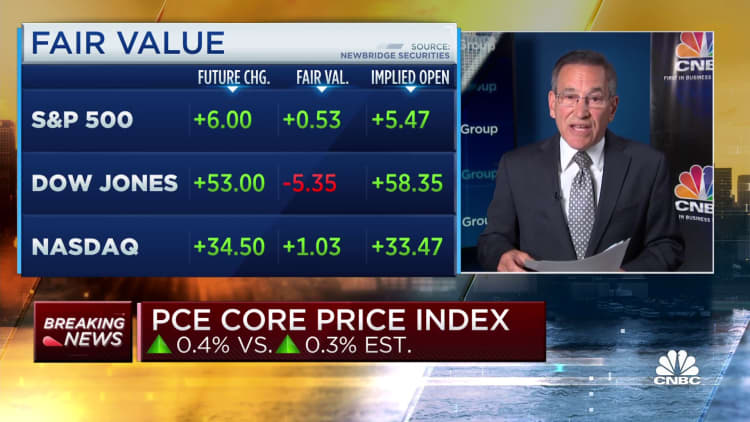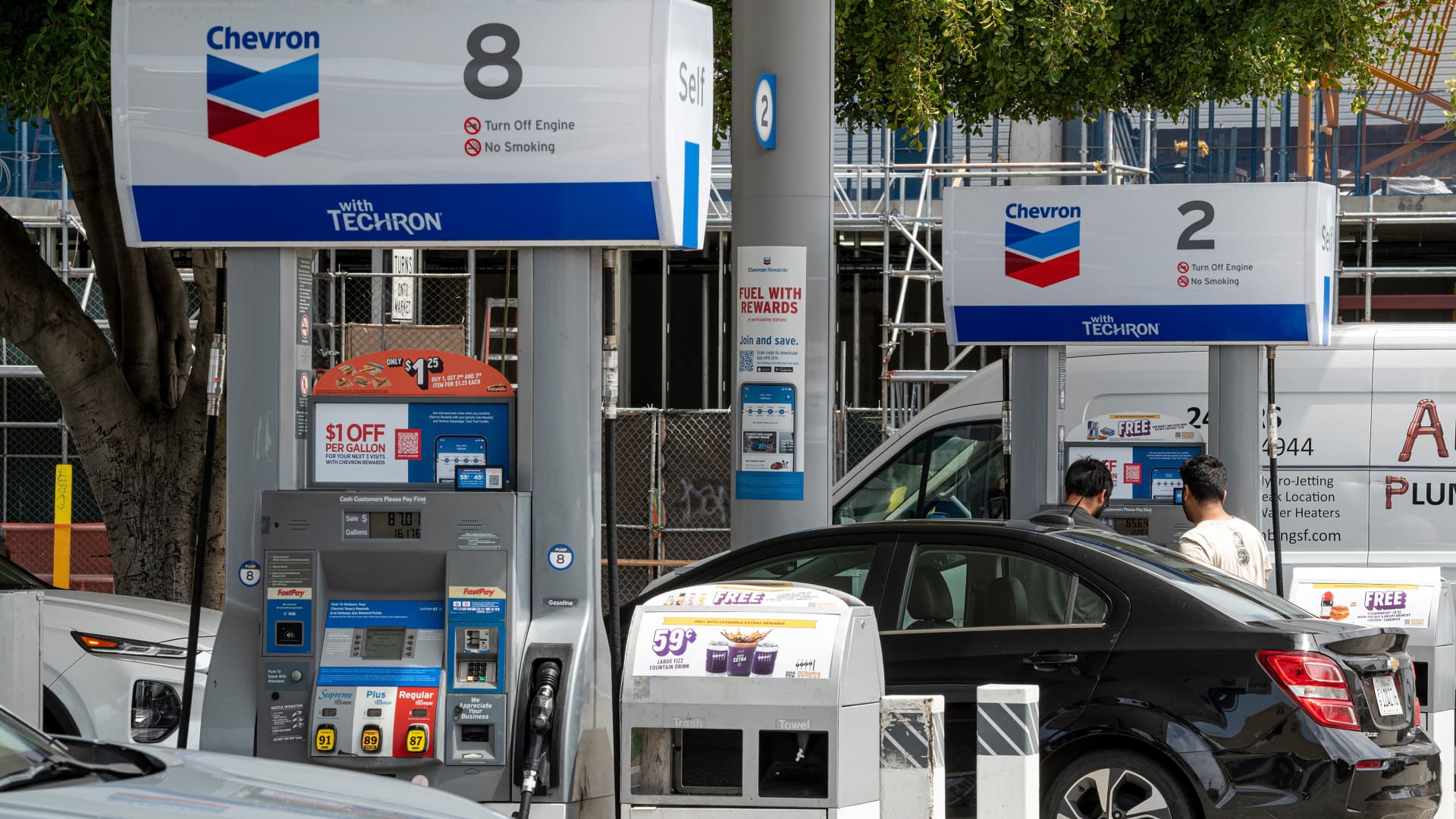
In April, inflation remained persistently high, potentially strengthening the possibility of prolonged higher interest rates, as stated in a closely monitored gauge released by the Federal Reserve on Friday.
The personal consumption expenditures (PCE) price index, which measures a range of goods and services and adjusts for changes in consumer behavior, increased by 0.4% for the month, excluding food and energy costs. This was higher than the Dow Jones estimate of 0.3%.
related investing news


According to the Commerce Department, on an annual basis, the gauge rose by 4.7%, which was 0.1 percentage point higher than expected.
When including food and energy, the headline PCE also increased by 0.4% and was up 4.4% from a year ago, surpassing the 4.2% rate in March.
Despite the higher inflation rate, consumer spending remained strong as personal income increased.
The report revealed that spending surged by 0.8% for the month, while personal income saw a 0.4% acceleration. Both figures were projected to increase by 0.4%.
The price increases were evenly distributed, with goods rising by 0.3% and services increasing by 0.4%. Food prices experienced a slight decrease of less than 0.1%, while energy prices rose by 0.7%. On an annual basis, goods prices increased by 2.1% and services by 5.5%, indicating a shift towards a services-focused economy in the U.S.
Food prices rose by 6.9% compared to a year ago, while energy prices fell by 6.3%. These monthly PCE gains were the highest since January.
The markets showed minimal reaction to the news, with stock market futures pointing higher as investors focused on improving prospects for a debt ceiling deal in Washington. Treasury yields mostly increased.
Implications for the Fed
“With today’s hotter-than-expected PCE report, the Fed’s summer vacation may need to be cut short as consumers’ vacations fuel spending,” noted George Mateyo, chief investment officer at Key Private Bank. “Prior to today’s release, we believe that the Fed may have been hoping to take the summer off (i.e., pause and reassess), but now it seems as if the Fed’s job of getting inflation down is not over.”
The report comes just a few weeks ahead of the Fed’s policy meeting on June 13-14.
The Fed targets annual inflation around 2%, and the current levels are significantly higher than the goal, suggesting that the aggressive measures taken by the central bank over the past year or so may remain in place.
One of the ways the Fed’s rate hikes are supposed to work is by reducing demand. However, the April spending numbers demonstrate that consumers have continued to spend despite higher rates and strong inflation, indicating that policymakers may need to take additional action.
Immediately following the report, market pricing shifted to a 56% chance that the Fed will implement another quarter percentage point interest rate hike at the June meeting, according to the CME Group. There are only two key inflation-related data points before then, with the May nonfarm payrolls report due next Friday and the consumer price index released on June 13.
In addition to the increase in consumer spending, there was an unexpected 1.1% rise in demand for durable goods in April, as reported in a separate Commerce Department report. Economists surveyed by Dow Jones had anticipated a decline of 0.8%. Excluding transportation, new orders fell by 0.2%.
Consumers had to dip into their savings to sustain their spending, as the personal savings rate dropped by 0.4 percentage points to 4.1% in March.
This data comes at a time of high uncertainty regarding the future direction of the economy. Expectations of a recession later this year are high, considering rising interest rates, an anticipated credit crunch in the banking industry, and various pressures on consumers.
However, a report released on Thursday showed that the economy grew more in the first quarter than initially estimated, with real GDP expanding at a 1.3% annualized pace compared to the previous estimate of 1.1%.
Real gross domestic income, on the other hand, experienced a 2.3% decline in the quarter. GDI measures all money earned from goods and services and usually moves in tandem with GDP. Taking the two measures into account shows a quarterly growth decline of 0.5%, according to the Commerce Department.
Simultaneously, the goods trade deficit surged by 17% in April to $96.8 billion, according to the Commerce Department’s advanced economic indicators report released on Friday. Exports have a negative effect on GDP.
Nonetheless, Citigroup economists expect the Fed to raise its forecasts for inflation and GDP in its June meeting updates.
Minutes released on Wednesday from the May Fed meeting showed policymakers split on their next move, as they grappled with balancing higher-than-expected inflation and the spillover effects of troubles in the banking industry.
Denial of responsibility! VigourTimes is an automatic aggregator of Global media. In each content, the hyperlink to the primary source is specified. All trademarks belong to their rightful owners, and all materials to their authors. For any complaint, please reach us at – [email protected]. We will take necessary action within 24 hours.


